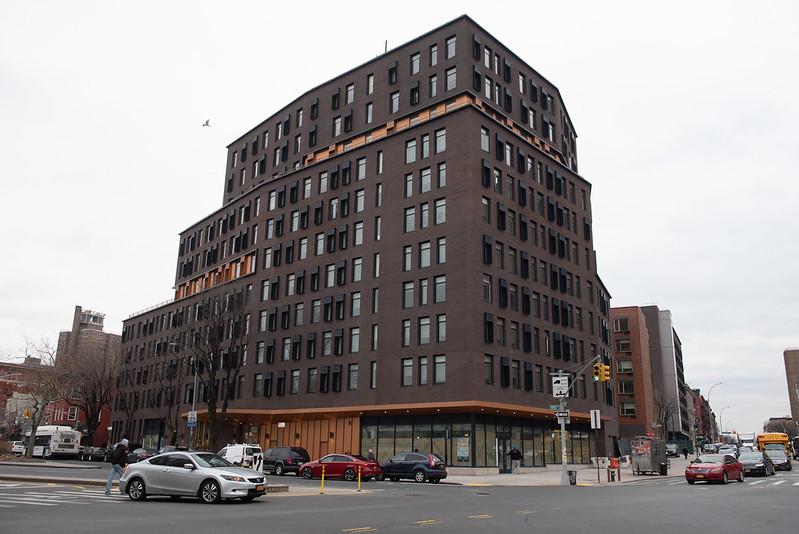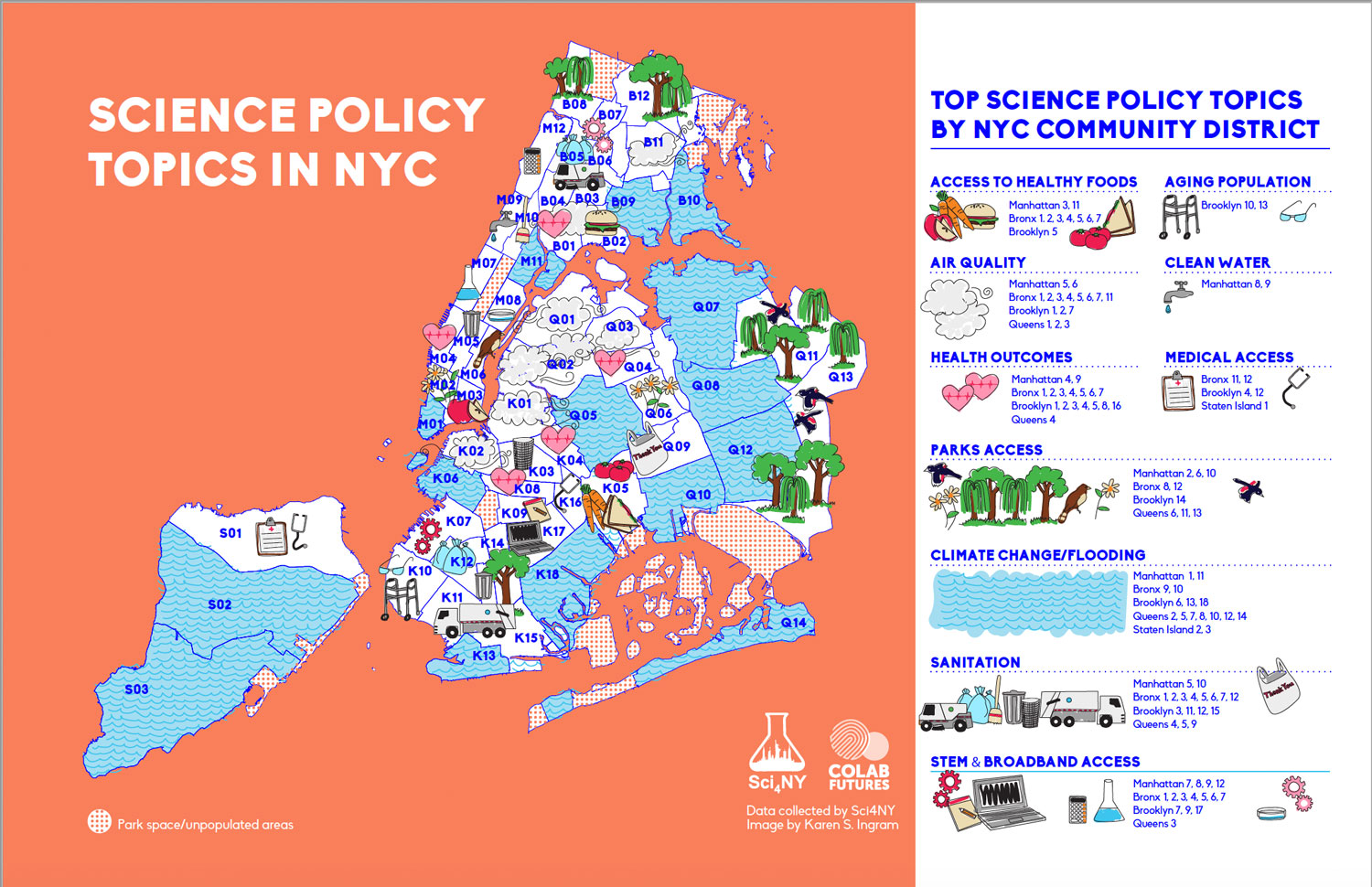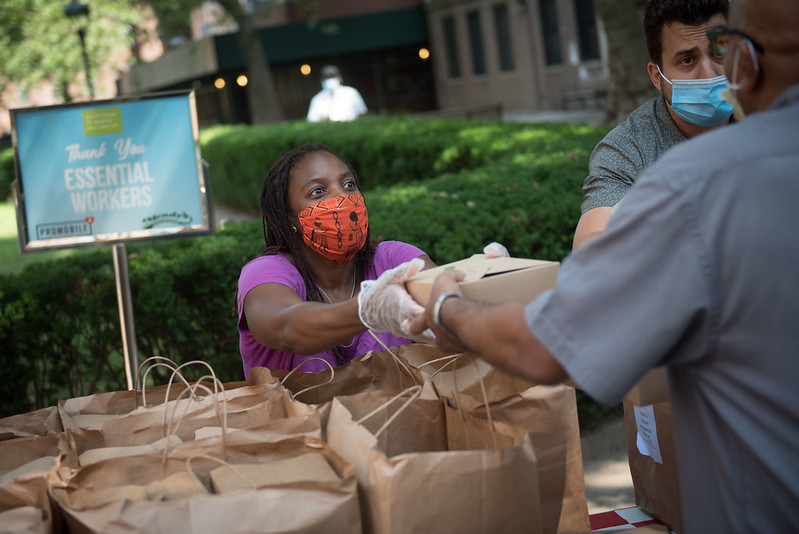Affordable Housing is the Key to New York’s Recovery

Housing is essential to the city's recovery (photo: Michael Appleton/Mayor's Office)
As we begin yet another month of the pandemic, New Yorkers are alarmed at the acute rent crisis crippling our city. While statewide executive orders temporarily postponing evictions help for the moment, unemployed tenants are building up unpaid rent debt that they will struggle to pay even after they begin working again. And even before COVID-19, more than half of city renters were paying more than a third of their income in rent, and a third of city renters paid more than half their income in rent. While this was never sustainable in the long run, it is now a major obstacle to achieving the recovery New York desperately needs.
The city has been facing an affordable housing shortage for over a century. The virus has put into stark relief that this scarcity impacts not only lower income residents but also the vital middle class. So as we look to recover, we can – and must - make our communities stronger and safer by investing in housing that people can afford as opposed to barely scraping by. Not only will this create jobs that are desperately needed, it will also mean more money in our local economy for the small, local businesses that need our support more than ever.
This is why New York City must embrace New Deal-style economics, starting with an affirmative policy of “Housing First,” focusing both on helping New Yorkers with housing insecurity and also moving people out of the expensive, unpopular, and unhealthy shelter system. Beyond the direct benefits dramatically expanding stable, affordable housing will also improve outcomes for people facing substance abuse, mental health, education deficits, or lack of medical care.
To achieve this, we need a multi-tiered approach that includes community-driven, 100% affordable housing upzonings in areas that have been overlooked.
We need to review the Inclusionary Housing program to consider increasing the percentages of affordable units and use an affordability standard that is not based on a misleading “Area Median Income” that averages low-income communities with ultra-wealthy places like the Upper East Side or Westchester County.
Any new housing on NYCHA land must be built with the support of NYCHA residents, and it must be for 100% affordable housing, not luxury housing that will have almost no impact on the $40 billion backlog in repairs public housing needs.
Overall, we need to take every opportunity to finance and build new affordable housing. And I know we can do it.
On Manhattan’s Community Board 9, I joined in advocating for 200 units of affordable housing in the Hamilton Heights neighborhood of West Harlem as part of a landmark redevelopment, saving a piece of history in the RKO Theater at 146th Street and Broadway. I also pushed City Planning to allow the construction of 300 units of affordable housing in Manhattan Valley above the Con Ed substation at 110th Street and Amsterdam. Both projects will be 100% permanently affordable housing, and if realized, will provide new homes for over 1,000 residents in the 7th City Council District.
We need a complete survey of unutilized or underutilized land and air space, and we need to aggressively determine what is suitable for new Mitchell-Lama style, 100% affordable housing, and then we need to build it.
Affordable housing is a century-old problem for New York, but in this moment, we have a unique opportunity to address this need with actions that can also help restore the economy as our city suffers like never before. It’s time to invest.
***
Dan Cohen is a candidate for City Council in the 7th district, an affordable housing advocate, and community leader. On Twitter @DanCohenNYC.
***
Have an op-ed idea or submission for Gotham Gazette? Email This email address is being protected from spambots. You need JavaScript enabled to view it.
Rebuilding A Stronger, Healthier New York Through Science

Mapping community concerns that science can help address
Any true New Yorker knows the question is not if New York City will rebuild from COVID-19, but how and when. In order to genuinely build back a better, more sustainable, equitable, and resilient city there has never been more need for effective partnerships between communities, government, and experts.
Science for New York aims to overcome these challenges on a local scale in New York City. We are scientists who volunteer our skills to translate technical and analytical information into meaningful, policy-focused recommendations aimed at increasing the well-being of the city and its residents. While COVID-19 took an enormous toll on our city, including shutting down academic research laboratories, it provided the opportunity for us to redirect this important human capital toward civic engagement work.
One project mapped publicly available data and public input from New York City’s 59 community boards to highlight science-related inequities across the neighborhoods. Your community might be most concerned about sunny day flooding, broadband availability for remote learning, or access to more medical care. Neighborhoods with lower numbers in key socioeconomic metrics had multiple issues that could benefit from scientific support. Our goal was to use the map as science policy outreach to City Council candidates and community organizers.
We reached these key stakeholders through 21 in ’21, an organization striving to achieve gender parity in the New York City Council through the 2021 city elections. Science for New York (Sci4NY) hosted a summer workshop series for its members on how science-based issues including COVID-19, climate change, health, and STEM education impact New York City. The most important lesson we learned from this engagement activity is that our ability as scientists to meaningfully and rapidly identify and synthesize data is very valuable to candidates working to address these issues in their local communities. Currently we are providing support to candidates and community organizers in areas such as maternal and newborn health disparities, green roofs, urban farming, foster care, and climate equity.
Beyond the projects related to the science policy map, Sci4NY has piloted a number of other collaborative projects in the city. These include: lending technical input on pesticide legislation; better ways to improve composting to reduce greenhouse gas emissions; and ways to identify climate change knowledge gaps in order to improve community resiliency. We also worked to bring local policymakers and scientists together at events to learn from each other and simply interact more.
A recent, successful example of having local communities and scientists work together to solve complex issues facing local communicates comes from another equity-challenged city: San Francisco. In April, a coalition called Unidos en Salud recruited hundreds of volunteers to run one of the largest “test to care” coronavirus studies to reduce COVID-19 transmission in the city’s disproportionately affected low-income Latino communities. Since many community members could not work from home, local volunteers worked in tandem with medical professionals and scientists to greatly improve testing. Government officials helped with mobilization, including relaxing requirements for staffing diagnostic labs. In four days, over 4,000 people were tested. Those who tested positive were given care.
In the research community, we have an approach called team science, where groups of academics with different expertise and backgrounds come together to produce solutions, balance contrasting viewpoints with evidence, and develop new ideas. We see particular reason to use this effective approach to tackle some of New York City’s largest challenges. At the same time, we fully acknowledge that many smart and highly-capable people already work on these issues in New York City. Therefore, we strive to not replicate, but rather, amplify existing efforts by integrating our scientific skills to address community knowledge gaps and enhance the overall policy process.
We are confident that many world-class scientists will continue to flock to the city’s academic institutions, eager to explore New York City’s diversity, inspiration, and innovation. As they express their desires, like those scientists before them, to help build a better society, we’ll be here to show them a path forward. Three years in the making and counting, Sci4NY remains committed to developing the collaborations that will rebuild a stronger, healthier New York City for all.
***
Kristin R. Anderson is a postdoctoral research fellow and holds a PhD in Neuroscience, and a member of Sci4NY. Arthee Jahangir is a co-founder of Sci4NY and holds a PhD in Biomedical Sciences. Nancy Holt is a co-founder of Sci4NY and holds a PhD in Physical Chemistry.
Sci4NY can be reached at This email address is being protected from spambots. You need JavaScript enabled to view it. and on Twitter @Sci4NY.
Above map was created by Karen Ingram, an indie Creative Director who focuses on science communications and a cofounder of CoLab Futures.
***
Have an op-ed idea or submission for Gotham Gazette? Email This email address is being protected from spambots. You need JavaScript enabled to view it.
The Mayor and Governor Must Save Community Nonprofits to Save Lives and Livelihoods

Essential workers need help (photo: Michael Appleton/Mayoral Photography Office)
The COVID-19 pandemic is not just a medical problem—it's a social one. As everyone knows, it is caused by the new coronavirus, SARS-CoV-2. But it is fueled by inequity. Black and Latino New Yorkers have been twice as likely to die from COVID-19 as their white neighbors because of a raft of social factors: People of color are more likely to live in overcrowded housing that makes social distancing impossible, have jobs as "essential workers" that makes working from home impossible and increases their chances of exposure to the virus, and lack access to health insurance and health care that could help them if they fall ill.
So-called social determinants of health also play a role in the underlying medical conditions known to raise the danger posed by COVID-19. Inadequate access to nutritious food may lead to diabetes and hypertension, poor housing conditions are linked to asthma, and chronic stress (like that caused by food insecurity, discrimination, and housing instability), weakens the immune system. Social disparities are a major cause of avoidable medical conditions, and those conditions made poor communities and people of color more susceptible to the first wave of COVID-19.
The social dimension of COVID-19 means that medical providers cannot fight the pandemic alone—they need the help of the nonprofit human services sector if they are going to save as many lives as possible. Human services organizations run the food pantries, deliver assistance to seniors, operate shelters for people experiencing homelessness, support survivors of domestic violence, and provide mental health services for those in crisis. But tragically, in New York, many of these nonprofits face an existential threat because of recent policy decisions at the local and state level.
These organizations derive the majority of their funding from contracts with the New York City and State governments. But this July, Governor Cuomo issued an executive order that allows the state to delay payments to nonprofits that are delivering services like food assistance and homeless shelter. Further exacerbating the problem, this summer Mayor de Blasio and the New York City Council approved a budget that cut funding from the city budget designated to retroactively reimburse nonprofits for their indirect costs.
Even before these moves, many human services organizations were already approaching a breaking point, thanks to city and state contracts that have long been chronically underfunded. This includes payment rates that don’t cover the full cost of programs and delays in payments for services provided. In April, a survey of New York nonprofits by the New York City Employment and Training Coalition and the Human Services Council found 64 percent of organizations believe they will have to reduce service offerings in the future, and 70 percent believe they will need to lay off staff due to budget shortfalls. A July analysis by the nonpartisan organization Candid concluded that 1,800 of New York’s nonprofits could ultimately go out of business due to COVID-19, ranking New York among the ten states in the country that could see the most nonprofits close on a per capita basis.
New York’s finances are indeed in a precarious position, but it is foolhardy to balance our state and local budgets by destroying the very organizations we need most for recovery.
To rein in this pandemic and prevent future ones, New York’s policymakers need to fund the organizations with the knowledge and ability to address the social disparities that grind down the resilience of New York’s citizens. Mayor de Blasio and Governor Cuomo need to honor their financial commitments to nonprofits. The state must pay for the services it has contracted for, and the city must follow through on promised reimbursements for services that were delivered last year.
New York’s human services organizations are calling 911. If we want a healthy city and state, it’s time to answer.
***
Udai Tambar is vice president for community health at Northwell Health. Michelle Jackson is the executive director of the Human Services Council of New York (HSC), an organization representing nonprofit human service organizations across New York.
***
Have an op-ed idea or submission for Gotham Gazette? Email This email address is being protected from spambots. You need JavaScript enabled to view it.




